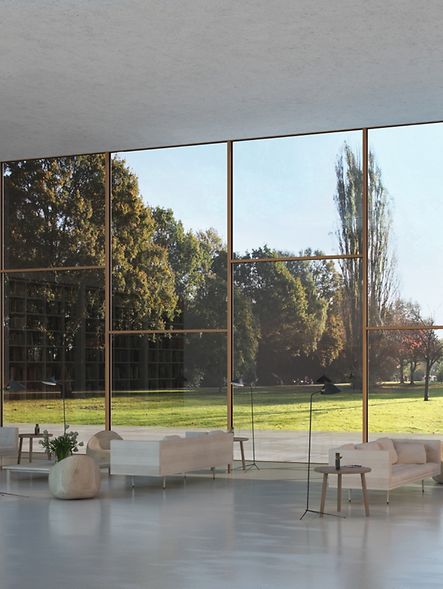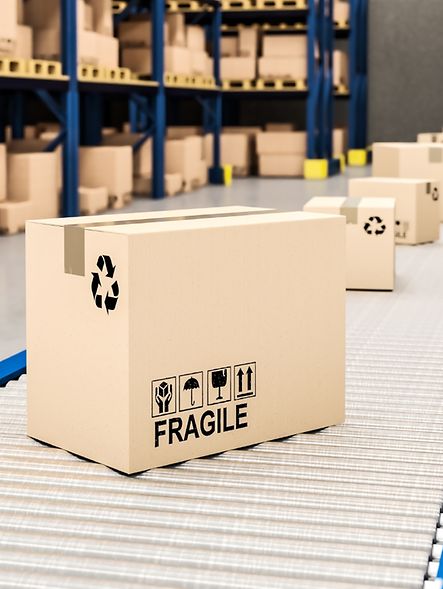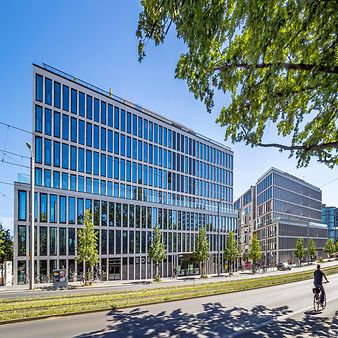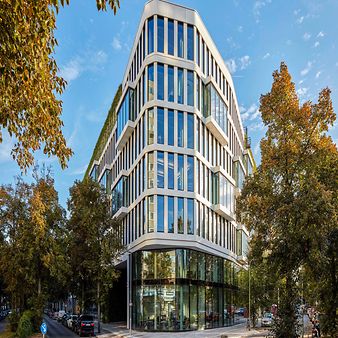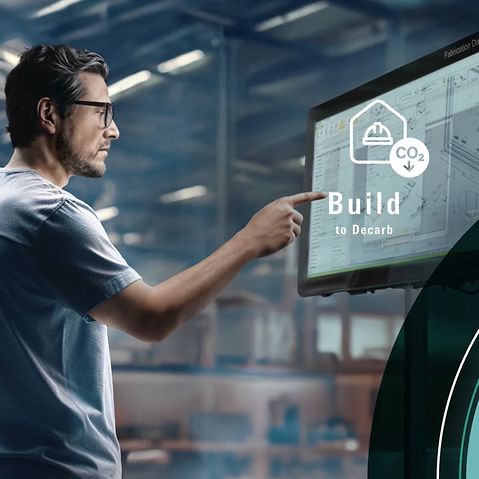
Sustainable building and renovation are becoming the future standards for the construction industry. The driving force behind this is the European Green Deal, which is aiming for Europe to become climate-neutral by 2050. In Germany, this target is to be met by 2045: a major challenge that will also change the construction sector, as it is responsible for 38% of global CO₂ emissions.
Given the strict European sustainability and climate-protection requirements, investors and architects are now demanding future-proof buildings, i.e. with reduced emissions. Metal construction companies and other trades within the construction industry must now focus more on sustainable building if they want to remain competitive.
These businesses need the support of system providers and sustainable solutions: Schüco Carbon Control helps metal construction companies with customised offers that allow them to actively optimise the carbon footprint of the building envelope throughout all building phases.
Project-specific CO₂ minimisation in all building phases: Schüco Carbon Control

With Build to Decarb on the path to a CO₂ -neutral future
‘Build to Decarb’ is our modular product that allows fabricators to actively manage the carbon footprint of the planned building during construction and to adhere to regulatory requirements.
Alongside energy and CO₂-efficient solutions such as our 3D calculation software SchüCal, reduced-CO₂ hybrid systems and new materials such as low carbon and ultra-low carbon aluminium are available to our clients.
This efficient combination makes it possible to reduce the level of Embodied Carbon in construction projects and in addition to achieve an acceptable basis for the reduction of Operational Carbon during subsequent operation of the building.
FAQ
What is an EPD?
What is an EPD?
The abbreviation EPD stands for ‘Environmental Product Declaration’. The EPD is a document itemising, in data form, the environmentally relevant properties of a specific material that is to be used in construction. Ideally, the entire lifecycle of the material will be taken into account here. Using this data, which is based on the GWP value of the material and the structure, an ecological assessment of the building can be carried out and the building certified.
What is the GWP value?
What is the GWP value?
The GWP value quantifies the ‘Global Warming Potential’ of a building – the CO₂ emissions from Embodied Carbon and Operational Carbon – across its entire service life. The GWP value is shown as the CO₂e, or the CO₂-equivalent.
What do LC and ULC stand for?
What do LC and ULC stand for?
LC stands for ‘low carbon aluminium’ and ULC for ‘ultra-low carbon aluminium’. These two terms are used for aluminium products that are available from Schüco alongside similarly energy-efficient standard aluminium; they offer profiles with an especially low CO₂ value.



